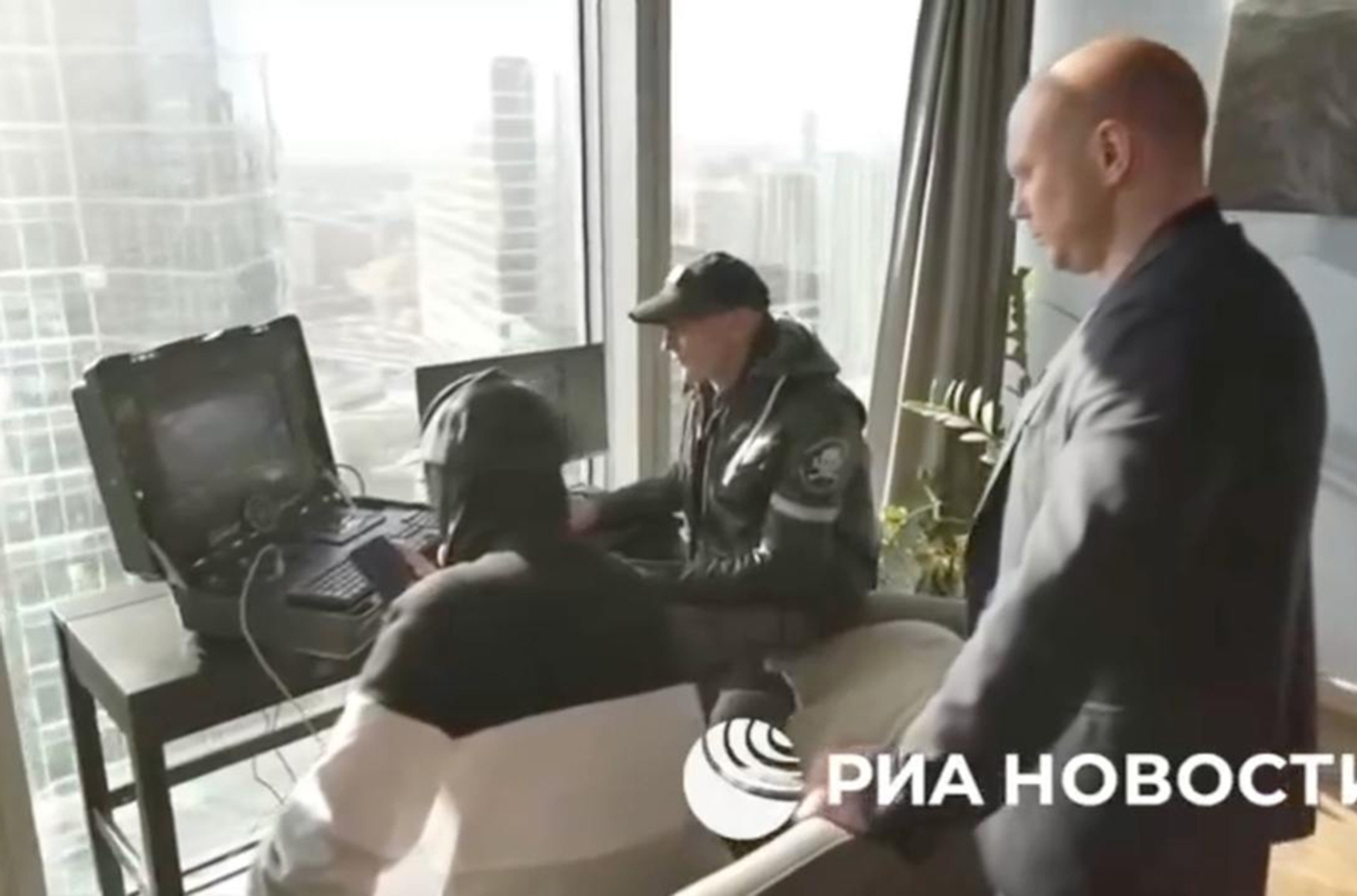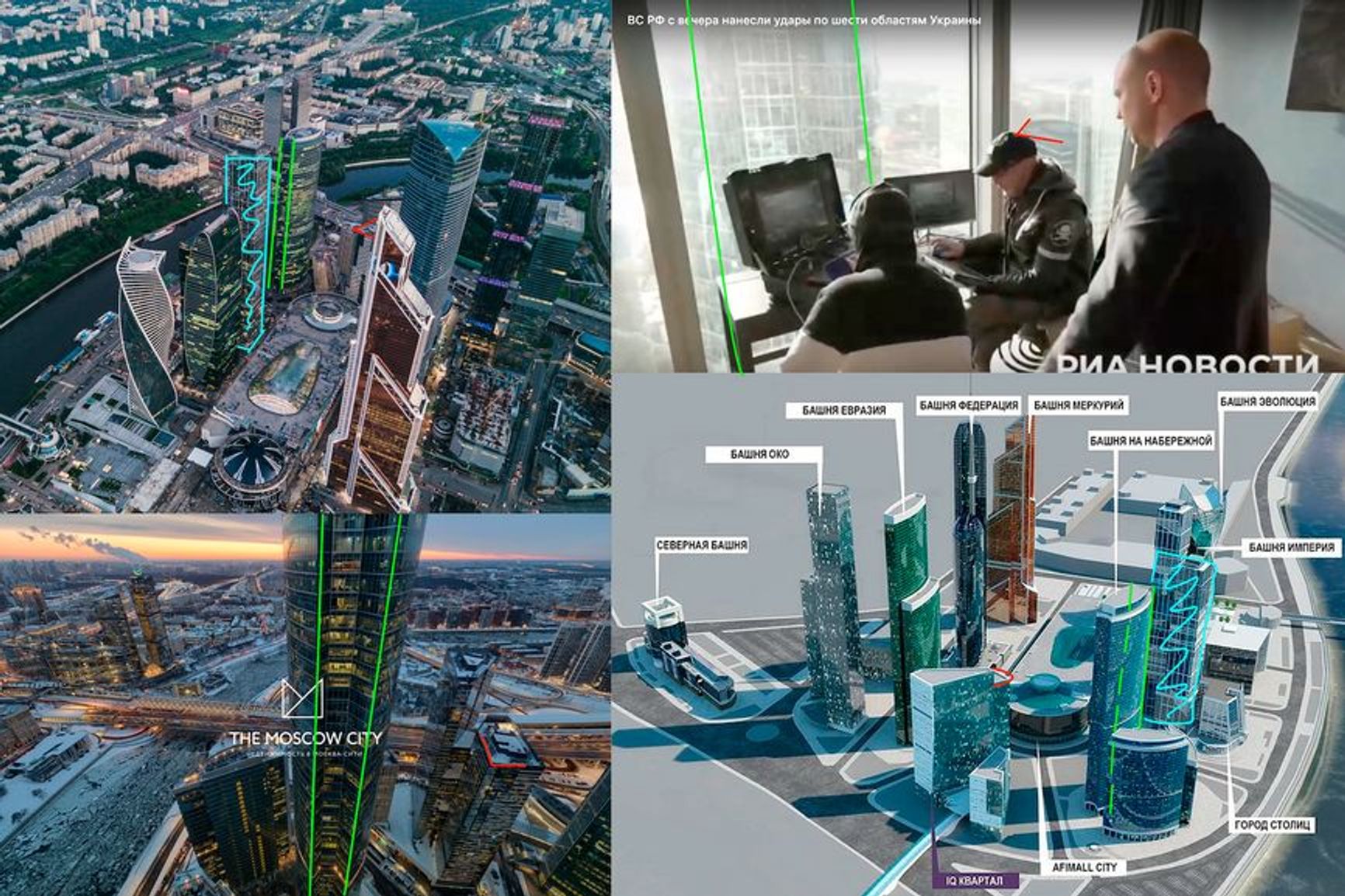
A screenshot of the now-deleted post by RIA Novosti showing Russia's Espanola brigade remotely piloting a strike drone from a Moscow high-rise residential tower.
On the morning of April 15, Russian state-run news agency RIA Novosti published — and later deleted — two Telegram posts that appeared to show military drone operators directing strikes against Ukrainian territory from a makeshift control center located inside a residential high-rise in Moscow City, the Russian capital’s business district.
The first post claimed that a “combat FPV drone, controlled from Moscow, struck an Armed Forces of Ukraine target in Chasiv Yar at an ultra-long distance for the first time.” The second post said the UAV, piloted remotely from Moscow, had been launched by the drone unit of the Espanola brigade, which was operating near Chasiv Yar — a city in the Bakhmut District of Ukraine’s Donetsk Region, most of which is under Russian control.
A six-minute video accompanied the posts, showing the coordination of the drone strike in detail. Both posts, along with the video, were removed within 90 minutes of publication. The Telegram channel CHTD first noticed that the posts had been taken down.
A screenshot of the second post by RIA Novosti.
Source: TGStat
A screenshot of the first post by RIA Novosti.
Source: TGStat
“The commander hit the target while sitting in Moscow City,” says one of the men involved in the operation after footage of the explosion is shown. “The operator feels safe, under no psychological pressure,” adds another figure in the video, highlighting the advantages of remote drone warfare. The full video remains available via the following link.
The Espanola brigade’s Telegram channel also posted information about the strike, saying the drone was operated by the brigade’s commander, callsign “Spaniard” (Stanislav Orlov), who “successfully hit the target near Chasiv Yar using our ‘Ovod’ drone, while sitting in a rented apartment in Moscow City.” The post notes that the “Orbita” system allows operators to be based anywhere, with Moscow City being chosen as a recognizable landmark “for the experiment.”
Espanola’s drone operators were located inside a unit of the “Gorod Stolits” (City of Capitals) tower, The Insider has determined. Visual analysis of the footage shows a clear view of the black roof corner of the IQ-Quarter complex to the right, and windows facing the end wall of the “Tower on the Embankment” are visible on the left side of the video. According to the residential complex’s official website, most of the floor space in “Gorod Stolits” is occupied by residential apartments and office spaces.

Update: The open source intelligence (OSINT) project GeoConfirmed was able to independently verify the location, confirming it separately from The Insider’s findings.
The RIA Novosti publication drew sharp criticism from pro-war Russian bloggers, many of whom questioned the decision to disclose such sensitive information.
“Did I get this right — that after this video, if a kamikaze drone hits a Moscow skyscraper, the enemy will claim they were targeting drone operators?” wrote self-styled “war correspondent” Vladimir Romanov.
The revelations echo findings from an October 2022 investigation by The Insider titled Remote killers: Who is guiding missiles towards Ukrainian civilian targets and how? — which detailed the existence of a secret unit within the Russian Armed Forces’ Main Computing Center (MCC) responsible for guiding missile strikes on Ukraine.
Under international humanitarian law, the use of civilian buildings for military purposes is strictly prohibited. The Geneva Convention stipulates that civilian objects — such as homes and office buildings — must not be made the object of attack or used to support military operations.
The Convention also obliges parties to a conflict to avoid locating military targets in densely populated areas and to take all feasible precautions to protect civilians from the dangers arising from military operations.